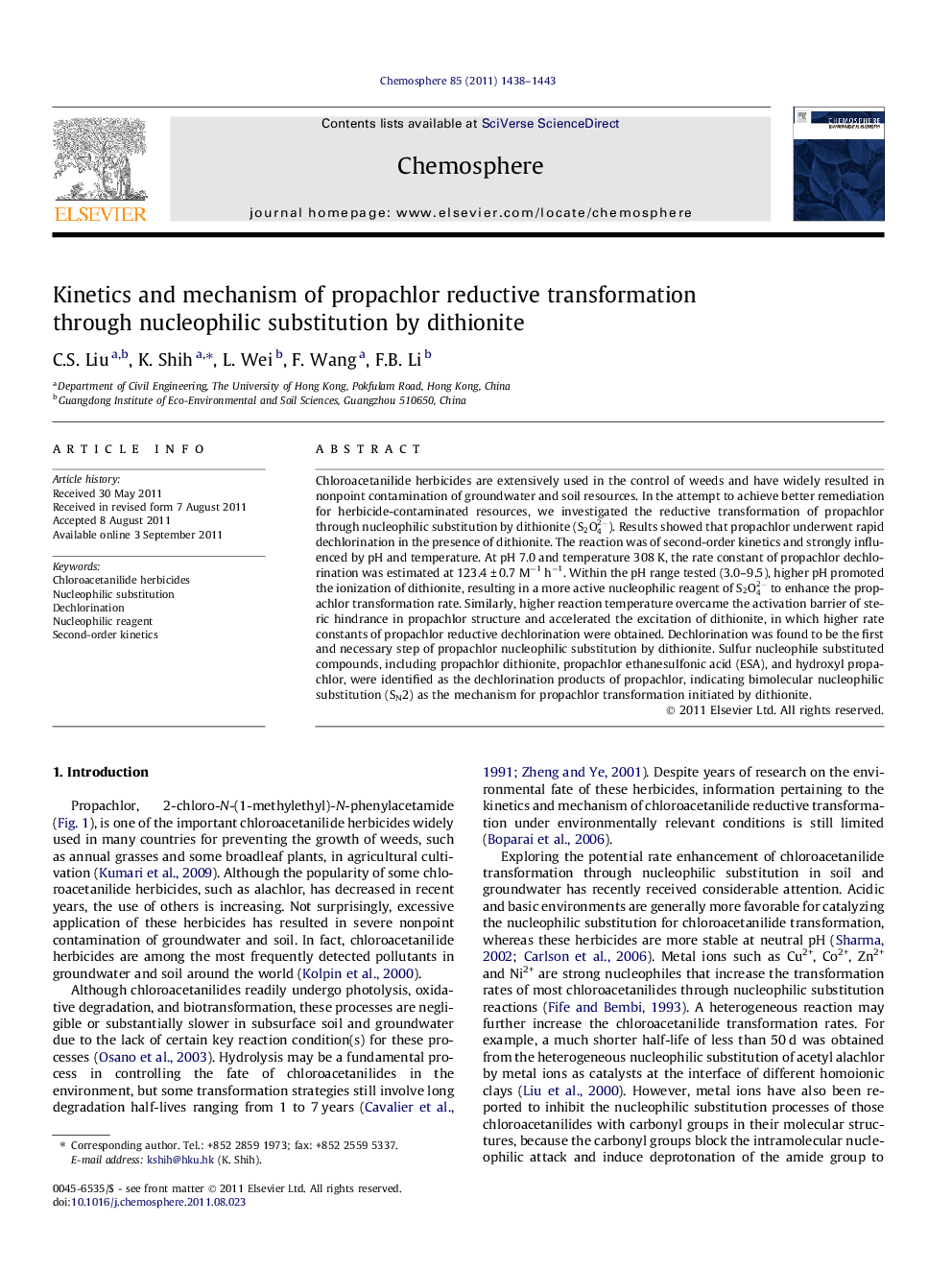| Article ID | Journal | Published Year | Pages | File Type |
|---|---|---|---|---|
| 4410480 | Chemosphere | 2011 | 6 Pages |
Chloroacetanilide herbicides are extensively used in the control of weeds and have widely resulted in nonpoint contamination of groundwater and soil resources. In the attempt to achieve better remediation for herbicide-contaminated resources, we investigated the reductive transformation of propachlor through nucleophilic substitution by dithionite (S2O42-). Results showed that propachlor underwent rapid dechlorination in the presence of dithionite. The reaction was of second-order kinetics and strongly influenced by pH and temperature. At pH 7.0 and temperature 308 K, the rate constant of propachlor dechlorination was estimated at 123.4 ± 0.7 M−1 h−1. Within the pH range tested (3.0–9.5), higher pH promoted the ionization of dithionite, resulting in a more active nucleophilic reagent of S2O42- to enhance the propachlor transformation rate. Similarly, higher reaction temperature overcame the activation barrier of steric hindrance in propachlor structure and accelerated the excitation of dithionite, in which higher rate constants of propachlor reductive dechlorination were obtained. Dechlorination was found to be the first and necessary step of propachlor nucleophilic substitution by dithionite. Sulfur nucleophile substituted compounds, including propachlor dithionite, propachlor ethanesulfonic acid (ESA), and hydroxyl propachlor, were identified as the dechlorination products of propachlor, indicating bimolecular nucleophilic substitution (SN2) as the mechanism for propachlor transformation initiated by dithionite.
► The reductive dechlorination of propachlor was efficiently achieved by dithionite. ► The transformation of propachlor initiated by dithionite follows second-order kinetics. ► Dechlorination was found to be the first and necessary step of propachlor transformation initiated by dithionite. ► Propachlor nucleophilic substitution by dithionite was confirmed as the SN2 mechanism.
